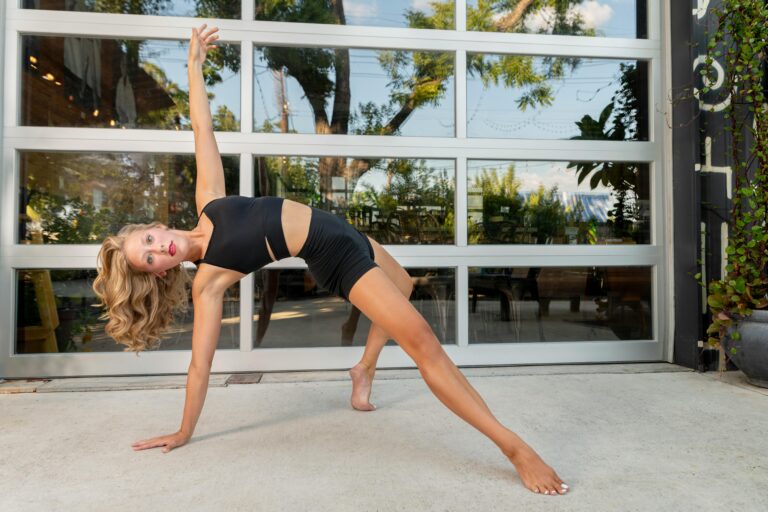What is Somatic Workout: Unlock Mind-Body Connection Through Movement


This site contains affiliate links, view the disclosure for more information.
Hey there, wellness seekers!
Ever feel like your body is carrying tension in places you didn’t even realize? Maybe your shoulders are tight, your lower back aches, or you catch yourself clenching your jaw throughout the day. It happens to the best of us!
Modern life pulls us in a million directions, and somewhere along the way, we lose touch with our own bodies. But what if you could restore that connection?
What if movement itself could be the key to unlocking a more relaxed, more attuned version of yourself? That’s where somatic workout come fitting into a larger approach to holistic health.
1. What Exactly Is a Somatic Workout?
Remember when you last felt completely in tune with your body? Maybe during a peaceful morning stretch or a relaxing walk? That natural, flowing sensation is what somatic movement is all about! Developed by Thomas Hanna somatics pioneer in the 1970s, this approach revolutionized how we think about movement and body awareness.
Why It Matters
- Awareness is everything: the first step to change is noticing how you move.
- Less force, more flow: instead of pushing through stiffness, somatic workouts invite relaxation.
- Posture and pain relief: chronic tension doesn’t stand a chance when you retrain your nervous system.
At its core, somatic workout is about conscious movement – it’s like having a thoughtful conversation with your body instead of giving it commands. Through neuromuscular repatterning, these gentle exercises help rewire how your brain communicates with your muscles. It’s fascinating stuff!
Think of it this way: if traditional exercise is like speaking to your body through a megaphone, somatic movement is like having an intimate chat with a close friend. It’s all about:
✅ Developing deeper body awareness training
✅ Understanding your unique movement patterns
✅ Learning to release unnecessary tension
✅ Creating lasting changes through movement educatio
2. The Science Behind Somatic Movement: Why It Works

Let’s dive into what makes these mindful movement practices so effective! The secret lies in something called sensory motor amnesia – a fancy term for when your brain forgets how to properly control certain muscles. Through body scanning techniques and movement consciousness, somatic exercises help wake up these “sleeping” connections.
The process works through three key principles:
- Awareness: Noticing how you move and hold tension
- Release: Gentle movements that help let go of chronic patterns
- Retraining: Teaching your nervous system new, more efficient ways to move
3. The Benefits: What Can You Expect?
Now, let’s talk about what makes body-mind practices truly special! The benefits of incorporating somatic flexibility work into your routine are pretty remarkable:
Physical Benefits:
- Relief from chronic muscle tension through somatic release techniques
- Improved posture and alignment
- Enhanced flexibility without forcing or straining
- Better movement integration in daily activities
Mental and Emotional Benefits:
- Reduced stress through nervous system regulation
- Increased proprioception exercises awareness
- Better sleep quality
- Enhanced mind-body awareness
- Deeper connection to body wisdom practices
4. Getting Started: Your First Somatic Workout
Ready to begin your journey into movement consciousness? Let’s start with some fundamental somatic stretching exercises that anyone can try:
The Basic Pandiculation Exercise
- Lie comfortably on your back (this is your safe space for somatic meditation!)
- Notice your breathing without trying to change it
- Slowly contract a muscle group (like your shoulders)
- Even more slowly, release the contraction while staying aware
- Rest and observe the sensations
Simple Somatic Breathing Practice
- Find a comfortable position
- Place one hand on your chest and one on your belly
- Notice the natural rhythm of your breath
- Gradually explore how small movements affect your breathing pattern
Gentle Spinal Twist (Unwind Tension)
- Lie on your back with your knees bent.
- Slowly lower your knees to one side while keeping your shoulders grounded.
- Breathe deeply, noticing any tightness.
- Return to center and repeat on the other side.
Remember: There’s no rushing in somatic work. These movement therapy exercises are about quality of attention, not quantity of repetitions!
5. Incorporating Somatic workout Exercises Into Your Daily Routine

The beauty of movement pattern training is that it fits seamlessly into your day! Here’s how to weave body sensing exercises into your routine:
Morning Practice (10-15 minutes):
✅ Start with gentle somatic stretches
✅ Practice body awareness meditation
✅ Explore slow, mindful movements
Evening Wind-Down:
✅ Gentle somatic movement therapy
✅ Calming nervous system healing practices
✅ Mindful body movement to prepare for sleep
6. Creating a Sustainable Practice
The key to success with somatic workout exercise benefits is consistency and patience. Here are some tips for maintaining your practice:
- Start small, even 10 minutes daily makes a difference !
- Listen to your body’s wisdom practices
- Keep a movement journal to track your progress
- Celebrate small improvements in body-mind connection
7. Your Journey to Better Movement
Your body has incredible wisdom – it just needs the right tools to express it!
Whether you’re dealing with tension, seeking better movement patterns, or simply wanting to connect more deeply with your body, somatic workouts offer a gentle yet powerful path forward.
Start your somatic workout journey today with curiosity and compassion. Your body is ready to teach you its language – all you need to do is listen! Ready to begin? Your journey to better movement awareness and overall wellness starts with a single mindful moment.
Looking to deepen your practice? Consider working with a certified somatic movement educator or joining a local class.
Remember…..
Every body is different, and that’s beautiful! Move at your own pace, stay curious, and enjoy the process of discovering your body’s unique language through somatic movement. Here’s to your wellness journey!
The content on Calm & Wellness is for informational purposes only and is not intended as medical advice, diagnosis, or treatment, always consult with a qualified healthcare professional
RELATED POSTS





19 Natural Ingredients for Hair Care That Actually Work (And Why You’ll Never Go Back)
Okay, real talk. If you’ve ever stared at the back of a shampoo bottle and felt like you needed a chemistry degree to understand it… you’re not alone. Between the sulfates, parabens, and mystery “fragrance”…
















